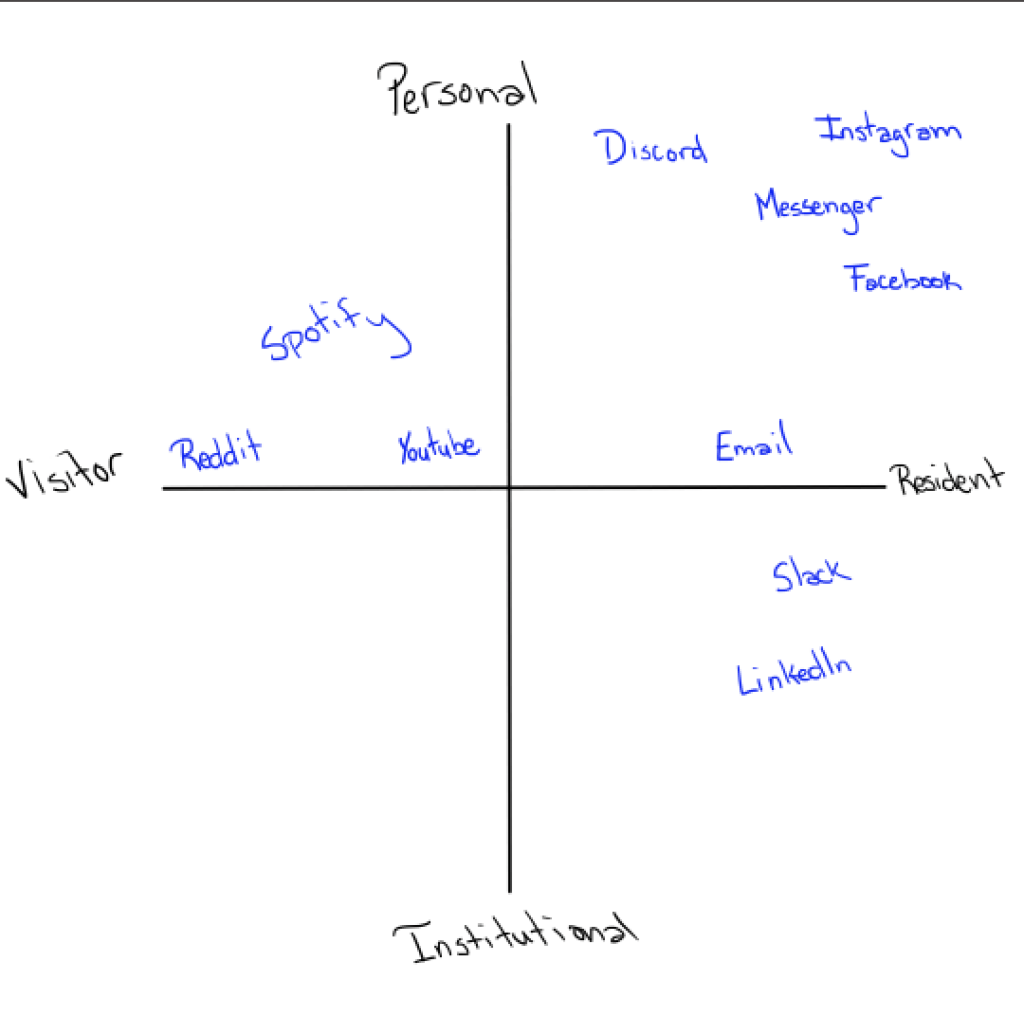Digital Identity
A digital identity is how we represent ourselves online on various sites such as social media platforms. Typically, this can be split into two categories: Personal and Professional.
A personal digital identity reflects who we are outside of work. This can include online interactions with friends and family through chats, and sharing photos of your social life. Your personal identity can also be another place to express your hobbies and other creative projects. These are the main aspects of my personal digital identity.
A professional digital identity reflects your career and/or academic life. For example, you might post about an achievement or an article related to your career. My LinkedIn account is my main professional digital identity.
Maintaining the boundary between personal and professional identities is an important part of being a responsible online user. It also ensures that personal interests don’t impact your professional life. I always double check privacy settings and I am very intentional with what I choose to share online.
Digital Visitor and Resident Map

By creating my own digital map, I have a visual representation of how I use various online platforms.
My online identity is more prominent on social media platforms such as Instagram and Discord, where I interact and share things with others.
On platforms such as Youtube and Reddit, I consider myself a visitor as I do not actively engage with other users or post content.
This map will likely change as I enter different stages of life and begin to focus on different goals. I imagine that I would spend less time on apps like Discord, and more times on platforms such as LinkedIn as I continue building my professional digital identity.
Theories of Personalized Learning
Amanda Morin’s Personalized learning: What you need to know article highlights that every student learns in a different way and at a different pace. Personalized learning is tailors educational plans to the students’ needs. Theories such as Constructivist and Self-Directed Learning are examples of personalized learning. Constructivism emphasizes action and engaging students, and self-directed learning allows students to take the initiative in identifying their learning goals and strategies.
One of the key benefits of personalized learning for me is the flexibility it allows. I am able to learn at my own pace, which encourages me to continue learning despite a variety of factors such as health. Self-directed learning has kept me motivated as I am able to pick what interests me and also improve the learning strategies that I know work for me.
Privacy, Surveillance, and Digital Footprint Awareness

Everything done online can be tracked, creating a digital footprint that is very difficult to delete. There are countless stories of people facing criticism based on old social media posts that have resurfaced. Therefore, I always ask myself whether what I post or comment is something that would cause an issue with anyone I work with, or those who don’t know me well. I also ensure that my personal digital identity remains on private settings rather than public.

Recent Comments